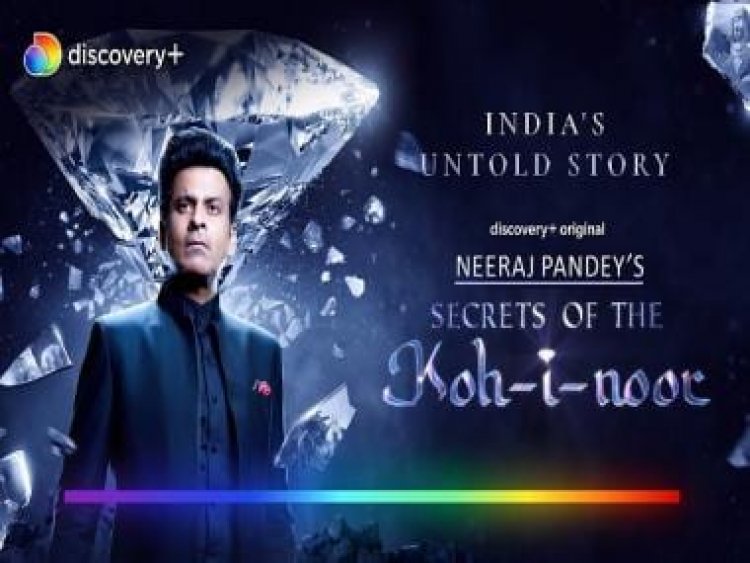Manoj Bajpayee's Secrets of the Kohinoor is an engaging, approachable example of popular history
Manoj Bajpayee's Secrets of the Kohinoor is an engaging, approachable example of popular history

For so many of us, Discovery Channel documentaries were our first exposure to the genre of ‘popular history’ that currently dominates English-language publishing in India. These documentaries in miniature, on world history, wildlife, geology, even more esoteric realms like forensic science, were eagerly lapped up by curious children and adults alike. They were created according to a set format — 'talking head’ domain experts interviewed at length, creating the exoskeleton for whatever question (age-old or relatively new) was being introduced to us by the host and/or the narrative voiceover. There was a certain comfort in knowing that the programme would seldom deviate from this format, increasingly funkier animated sequences ‘recreating’ the action notwithstanding. These programmes were brain food repackaged as fast food, a kind of parental trick to make us eat the greens before the ice-cream option was even on the table.
The new discovery+ documentary show Secrets of the Kohinoor, created and conceptualized by Neeraj Pandey (director of hit Bollywood films like Baby, A Wednesday and MS Dhoni: The Untold Story), directed by Raghav Jairath and hosted by ace actor Manoj Bajpayee, is very much in the vein of those classic Discovery Channel documentaries of the late 90s. Its theoretical underpinnings are, for the most part, solid. The presentation is attractive and approachable and Bajpayee does a fine job steering the ship, imbuing proceedings with just the right amount of theatricality with some well-chosen quips and Urdu couplets. On the whole, the documentary—90-odd minutes broken up into two episodes—delivers exactly what’s advertised; an approachable, entertaining approach to history wrapped up in some Bollywood-flavoured goodness thanks to Pandey and Bajpayee.
Broadly speaking, the first episode follows the legendary diamond as it passes through a succession of Mughal owners and/or stewards. And the second episode follow the Kohinoor during the days it was worn by Maharaja Ranjit Singh and how it ultimately ended up in British hands. On the whole, the first episode is slightly stronger than the second one but really, Bajpayee and the fast-paced script ensure that neither episode ever really sags.
Because of the way discovery+ shows like this one are formatted, in more cases than not the show lives and dies by the strength and versatility of its ‘talking head’ experts who basically keep the narrative chugging along. Secrets of the Kohinoor has a well-chose roster for the most part. This includes eminent historians like Prof. Irfan Habib and Prof. Farhat Nasreen (the latter teaches at Jamia Millia Islamia) as well as diplomat-authors like Shashi Tharoor and former Indian High Commissioner to the UK, Navtej Sarna (whose many books include a first-rate one on Ranjit Singh, called The Exile). It’s a strong, diverse bunch supplying expert insights, therefore, and this core group never lets the documentary down, from beginning to end. Professor Nasreen in particular is brilliant and concise in everything she says and her insights form the backbone of the first episode (Sarna plays an equally crucial role in the second episode).
A particularly interesting moment happens when Bajpayee tells the audience that there’s a period of 100-odd years where there’s little mention of the Kohinoor in recorded history and the question of its whereabouts has divided historians — we then see the talking heads disagreeing with each other over this question. Bajpayee says, “I have made up my mind, it’s up to you to make up yours”. In an era where editorial force-feeding of fake histories is par for the course, this spirit of independent enquiry is praiseworthy (it wouldn’t have been of note in an earlier era, but here we are).
A lot of attention has clearly gone into the fast-paced animated ‘recreations’ of the action being described by the ‘talking head’ experts. The thrill-a-minute battle sequences, the treachery, the intrigue, the ill-fated attempts at diplomacy et al are brought to life by these animated segments which are very well-designed if a little too influenced by SS Rajamouli-style Baahubali-like action. In fact, an animated stabbing towards the beginning of the first show is basically a recreation of the Kattappa-stabs-Baahubali scene from Baahubali: The Beginning.
Of course, there are visible issues of over-simplification at a few places, like there are with a lot of popular histories. Nuances are sometimes sacrificed in the interests of brevity and entertaining television. To its credit, Secrets of the Kohinoor doesn’t fall into this trap more than a couple of times. On the whole it is an entertaining and instructive documentary that’s likely to push inquisitive audiences to actually pick up a real history book and find out more perspectives on the most famous diamond of all time.
Aditya Mani Jha is a Delhi-based independent writer and journalist, currently working on a book of essays on Indian comics and graphic novels.
Read all the Latest News, Trending News, Cricket News, Bollywood News, India News and Entertainment News here. Follow us on Facebook, Twitter and Instagram.
What's Your Reaction?



























































